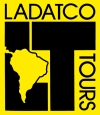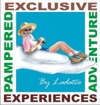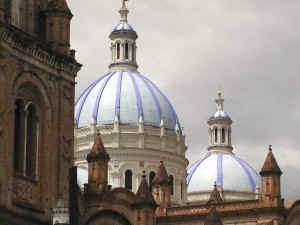

Destinations
Experiences
 |
L A
D A T C O T O U R
S |
 |
||||||||
| HOME | South America | Falkland Islands | Antarctica | Unique Destinations |
Unique Experiences |
Newsstand | ||||
 |
Cuenca Ecuador |
 |
CUENCA:
In the southern Sierra is one of Ecuador’s most charming colonial cities, Cuenca (pop 250,000) , the third largest city in the country. Rich in cultural traditions and often called the "Athens of Ecuador", Cuenca was founded in 1557 by the Spaniards on the site of Tomebamba, an Inca settlement. The city still retains a colonial air - cobble-stone streets and quaint old buildings wrth tile roofs and flower boxes on iron-scrolled balconies. On the Main plaza, Parque Abdon Calderon, are both the Old Cathedral started in 1557 and the new Cathedral de la Inmaculada started in 1885, which was planned to be the largest cathedral in all of South America but the architect made some miscalculatinos with the foundations and the final domes could not be built for fear of complete collapse of the entire structure.There is a small daily market in Plaza Civica with pottery, clothes, guinea pigs and local produce but Thursday is the main market day. Throughout the city you can see the famous delicately woven straw "Panama Hats", so called because they were originally exported via Panama and not because they were made there. The finer woven straw hats can last a lifetime and are expensive. Better hats can be bought rolled up in their own storage boxes and will last almost a lifetime if taken care of properly.
Some of the main places of interest in more detail:
PLAZA AND CHURCH OF SAN SEBASTIAN:
The Plaza of San Sebastian was built in the 17th Century as an open marketplace for the western part of the city of Cuenca. On its side is the church of San Sebastian, with a magnificent carved door.THE CATHEDRAL OF THE IMMACULATE CONCEPTION:
Located on one side of Plaza Calderón, this is the most important religious monument in the city of Cuenca, and one of the biggest architectural works in the country. Its construction started in 1880 and it was finished in 1974. The cathedral, which is also called the "New Cathedral", has imposing blue tiled domes and two towers in the facade. The decoration inside is also impressive, mainly because of its beautiful stained-glass windows, the gold leaf altar piece and the huge pillars covered with pink marble. Three styles are found in the architcture of the Cathedral: Roman, Gothic, Barroque and Renaissance. Austere, the Romanic elements are found in the main body, an enormous mass of walls and vaults; the Gothic is seen in the high steeples and the stained glass windows in the front and lateral walls; the Barroque is what most attracts attention, in the canopy of the main altar, an imitation of that of Saint Peter's in Rome, enriched with a multiplicity of additional adornments. The roof of the Cathedral is in Renaissance style, a series of six blue cupolas of different heights.THE TOMEBAMBA RIVER RAVINE (EL BARRANCO):
This is one of the most charming places in Cuenca, along a ravine formed by the erosive action of the river. The flat terrain on which the colonial center of Cuenca is located, abruptly ends and escends to the Tomebamba River in a vertical drop. The cheerful noise of the water and the picturesque hanging style houses which stretch down the green slopes along the Tomebamba river, surprise the visitors with a peculiar combination of nature and architecture. Women still do their washing in the river and spread out the clothes to dry in the banks, in very colorful patterns. THE MUSEUM OF MODERN ART (THE HOUSE OF TEMPERANCE):
On the southern side of Plaza San Sebastian is the Museum of Modern Art, which occupies a building of the 17th Century, called the House of Temperance, begun in 1876 to house persons with drinking problems. It became a museum in 1981 and its thick walls and long white corridors built around flowery courtyards are an excellent setup for colorful modern paintings and sculptures.COLONIAL DOWNTOWN CUENCA:
The Historical Center is located on the second terrace of a big alluvial cone, which was formed by the erosive action of the rivers during thousands of years. It is characterised by the presence of narrow cobblestone streets and picturesque colonial and republican style buildings, which give the city a special charm. This is also the commercial centre in the city, where most of the shops, banks, boutiques and hotels are found.THE NATIONAL ETHNOGRAPHIC MUSEUM OF THE CENTRAL BANK OF CUENCA:
The objective of this Museum is to offer a profound vision of Ecuador, through objects of daily use. The imaginary voyage that the visitor will experience through Ecuadorian regions and cultures, was in times past the multiple and real itinerary of the people who built and defined Ecuador's identity.
This Museum is the human face of Ecuador, a multiethnic and pluricultural country, a living mosaic of the mestizos, resulting from the fusion of the original inhabitants who were here thousands of years before the arrival of the Europeans, and later with people from Africa.
The visit of the museum starts at a Shuar dwelling, a universe of symbols of life and mitology of the Shuars. The pillars of the house join the lower world with the upper world, its elyptic shape represents the path of the sun. It has no internal walls, but the spacial distribution is rigorous: the feminine area or ekent to one side and the masculine area or tankamash on the other.NEARBY CUENCA:
BANOS:
Just 5 km southwest of Cuenca is the town of Banos with sulphur baths, a blue domed church and a delightful landscape.GUALACEO:
Gualaceo is a thriving modern town set in a beautiful landscape with a charming plaza ringed with shops specializing in gold and silver filigree jewelery and woolen goods. The valley of Gualaceo is 22 miles (36 kilometers) from Cuenca, at an elevation of 7,446 feet (2,370 meters) above sea level. From Cuenca drive along the Santa Ana valley and then high in the mountains, through very scenic landscapes, which change at every curb. Stop at the small towns of San Bartolome where guitars are hand made and artistically finished and at Sigsig, where the toquilla straw is harvested and prepared to weave into the famous Panama hats. Proceed to Chordeleg, through orchards and sugar cane plantations, a small town with many stores selling jewelry in gold and silver. Chordeleg is also known for its green and yellow pottery. You can have lunch at a very pleasant country inn, surrounded by flowering gardens and very close to the Santa Barbara river. After lunch, follow the road along the banks of the river, lined with weeping willows to the village of Gualaceo, famous for its Sunday market which sells mostly produce, animals, household goods and leather shoes. The valley of Gualaceo is famous for the production of peaches and there is a Peach Festival the first week of March. Visit another tiny town, Bulcay, where the weavers produce the finest shawls and scarves using backstrap looms and the technique of ikat, where the threads are tie-dyed to form specific designs before weaving.INGAPRICA:
Ecuador’s most important Inca ruins lie just 5 km east of Canar at 9,480 ft altitude. Ingapirca, which translates as "Stone Wall" were occupied by the naitve Canari people for 500 years before the INcas Huayna Capac took over the site from the conquoired Canaris in the thrid quarter of the 15th century. The site shows typical Cusco-style architecture such as tightly fitting stonework and trapezoidal doorways. There is some debate over its function, including use as a fortress, as a "tambo" (Inn) or a sun temple. Not far from the main site is the Cara del Inca, an immense natural formation in the rock overlooking the landscape; the Sillon de Inga (Inca’s chair) and the Incachugama, a large rock carved with channels which might have been used for offerings and divinations.